A solar battery is an essential part of your solar power system. It stores the excess energy generated by your solar panels, which can be used when your solar panels are not generating enough electricity, such as in the evening, at night, or during cloudy days with a power outage.
But did you know that there are many different types of solar batteries, each with specific advantages and disadvantages? If not, buckle up! It’s time to amp up your solar battery knowledge!

In this blog, you will learn about:
- The different types of solar batteries available on the market
- The advantages and disadvantages of each solar battery type
- The factors you should consider when choosing the right solar battery for your solar panel system
- Some of the best solar battery brands on the market
- The typical costs associated with various solar battery systems
- And much more!
Solar Battery Types
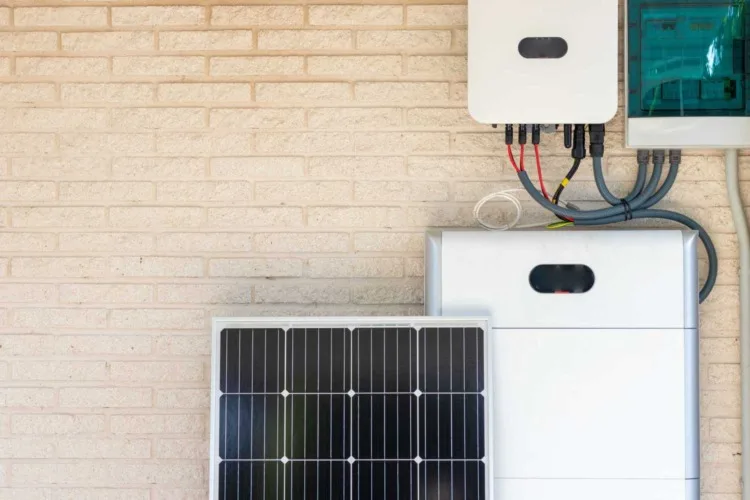
To keep up with the billion-dollar Global Solar Power Industry — currently worth $186.20 billion — many newer types of solar batteries have come about. Given below are details of each type of solar battery:
See Related: Best Solar Generators for Off-Grid Living
1. Lead Acid Solar Batteries
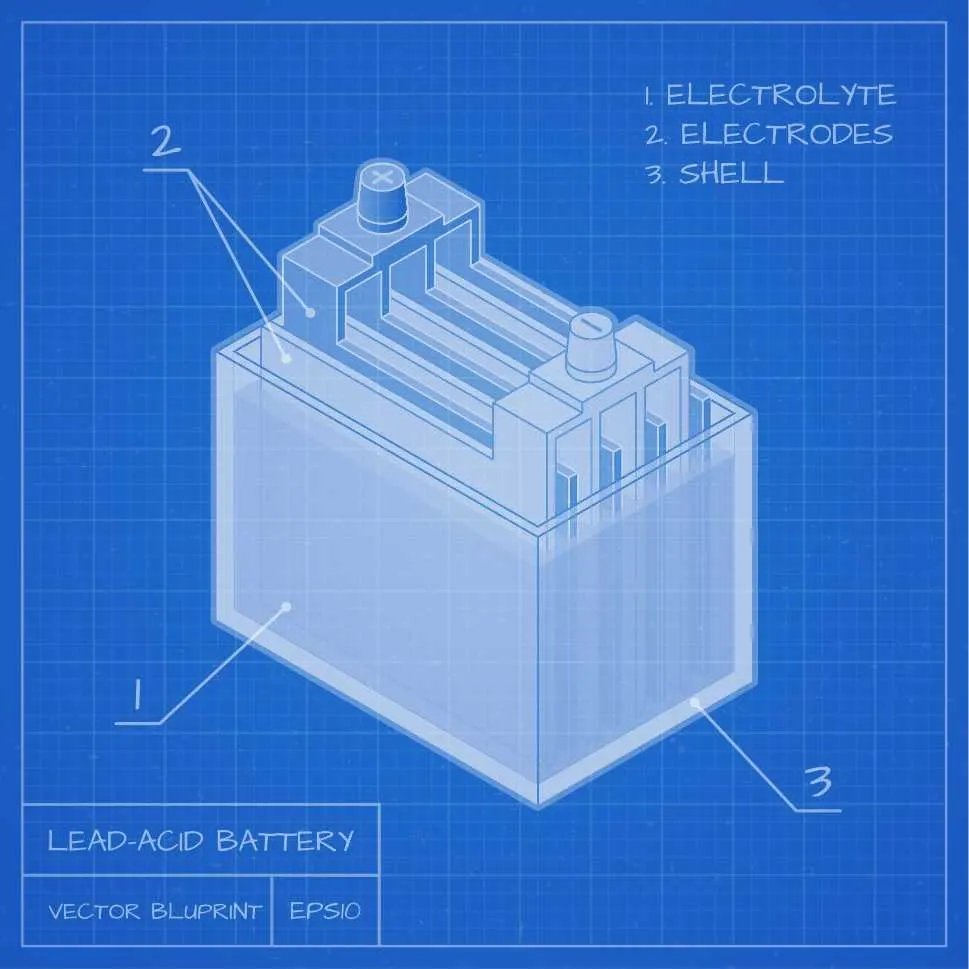
| Life Cycle (Approx.) | 1000-3000 cycles |
| Round-Trip Efficiency (%) | 75% |
| Average Cost (USD) | $100/kilowatt hour |
| Depth of Discharge (%) | 50% |
| Lifespan | 3-5 years |
Lead-acid solar batteries have been in use for over 160 years and are among the oldest and most common types of solar batteries. They are popular due to their durability, reliability, and affordability.
These batteries store and release energy by employing lead, water, and sulfuric acid in chemical reactions. Furthermore, lead-acid batteries can be classified into two main types:
- Flooded Lead Acid (FLA) batteries
- Sealed Lead Acid (SLA) batteries
FLA batteries have submerged plates and need regular maintenance to ensure proper functioning. They need periodic checking of water levels and may release harmful gases during charging.
In contrast, SLA batteries are sealed and do not need regular maintenance. They are also safer to handle and do not release gases during charging. But they are generally more expensive upfront than FLA batteries.
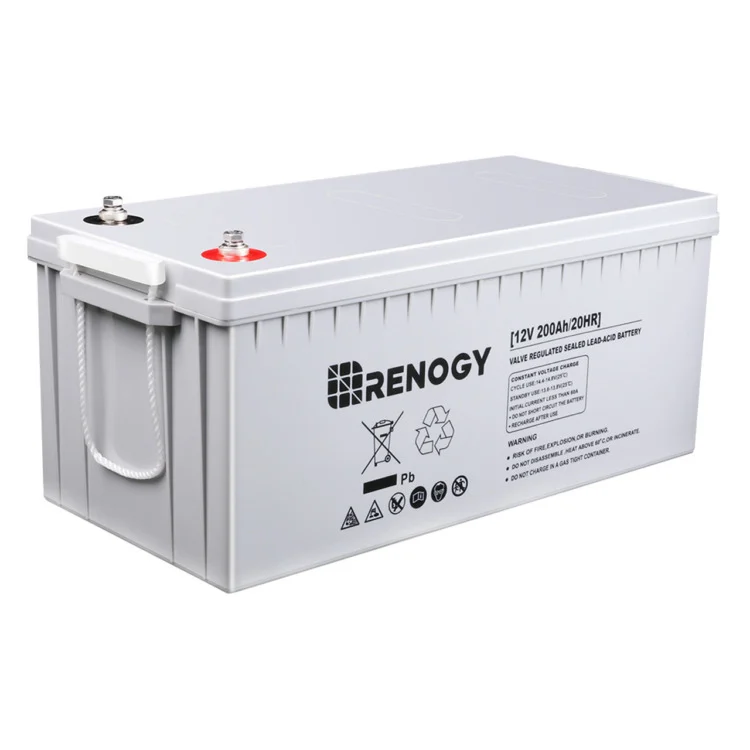
If you’re interested in purchasing high-quality sealed lead-acid batteries, I recommend the Renogy Deep Cycle AGM Battery 12 Volt 200Ah. This lead-acid battery is maintenance-free, leak-proof, gas-free, and has 2-year material and workmanship warranty guarantee!
Advantages
- Proven technology with a long history in the industry
- Cheapest energy storage option available on the market
- Suitable for a wide range of applications
- Can be easily disposed of and recycled
Disadvantages
- Shorter lifespan compared to other battery technologies
- Heavy and bulky
- Require regular maintenance, such as topping up the water level and cleaning the terminals
- More likely to leak acid, which can damage the device
- Lower depth of discharge (DoD) compared to the other storage options
Ideal Use Cases
- Off-grid solar system
- For emergency backup storage during power outages
- Smaller residential installations with a lower budget
See Related: Best Tesla Powerwall Alternatives to Buy Today
2. Lithium-Ion Solar Batteries
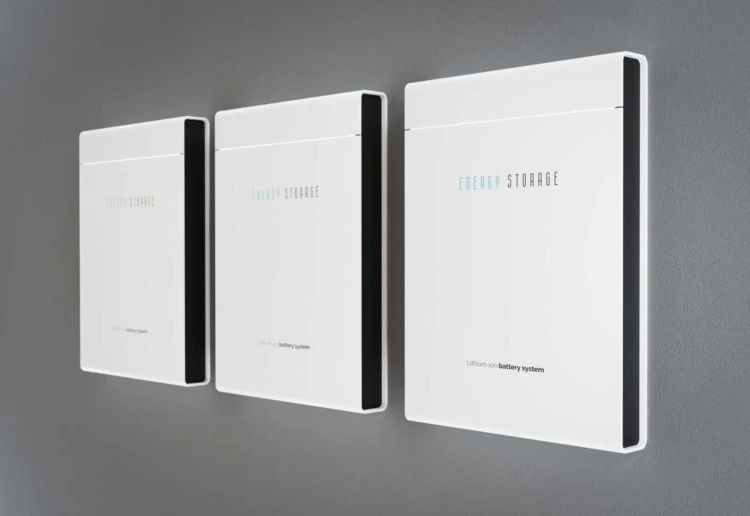
| Life Cycle (Approx.) | 3000-10,000 cycles |
| Round-Trip Efficiency (%) | 90%+ |
| Average Cost (USD) | $151/kilowatt hour |
| Depth of Discharge (%) | 80% |
| Lifespan | 5-15 years |
Lithium-ion batteries are the latest and most advanced type of solar batteries. These batteries are often referred to as ‘new kids on the energy storage block’ within the solar industry.
A key disadvantage of lithium-ion batteries is that they can be deeply discharged without affecting their performance. This makes them more long-lasting and cheaper over time compared to lead-acid batteries.
However, lithium-ion batteries also carry a potential risk of thermal runaway. What this means is if the batteries are not installed or looked after properly, they can get too hot and start a fire. So, it’s very important to follow safety guidelines and be careful when using a lithium-ion battery for as your battery system.
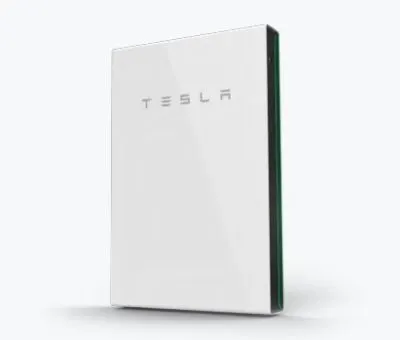
If you think a lithium-ion solar battery would be the best fit for your solar setup, consider checking out Tesla’s Powerwall Battery. This lithium-ion battery is one of the most well-rounded lithium-ion batteries available in the market and has a 10-year warranty with zero restrictions!
Advantages
- Longer lifespan compared to lead-acid batteries
- Require less maintenance
- Higher depth of discharge (DoD) — can handle deep discharges of 80% or more
- Higher energy density — provides more storage capacity in a smaller size
- Lightweight and more compact than lead-acid batteries
Disadvantages
- Higher upfront cost compared to lead-acid batteries
- Possibility of thermal runaway if not managed properly
Ideal Use Cases
- On-grid solar battery storage
- Off-grid applications requiring higher storage capacity
- Portable solar systems, such as solar-powered camping gear, mobile solar systems, etc.
- Residential solar installations
See Related: Sunrun vs Tesla: What’s Better?
3. Nickel-Cadmium Solar Batteries
| Life Cycle (Approx.) | 2000-8000 cycles |
| Round-Trip Efficiency (%) | 70% |
| Average Cost (USD) | $400/kilowatt hour |
| Depth of Discharge (%) | 60%-80% |
| Lifespan | 15-20 years |
Nickel-Cadmium (Ni-Cd) solar batteries are also an older type of solar battery that has been around for a while. But they are less common now in the solar industry due to the emergence of newer battery technologies.
These batteries use nickel and cadmium in their chemical reactions. They are known for being tough and able to withstand extreme temperatures. But, they are rarely used for residential solar installations. Ni-Cd batteries are most commonly used in airline and industrial applications.
However, note that cadmium is a toxic heavy metal. It can pose a threat to the environment if the batteries are not disposed of properly. For this reason, the use of Nickel-Cadmium batteries has been banned in a large number of countries.
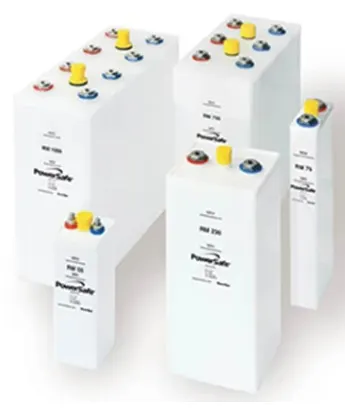
If you’re interested in buying a high-quality nickel-cadmium battery, I recommend the EnerSys Powersafe® RM Batteries. These batteries are a robust and reliable option with a 20+ year service life.
Advantages
- Highly durable
- Can withstand extreme temperatures
- Require low maintenance compared to other battery storage options
- Higher power density when compared to lead-acid batteries
- Higher discharge capabilities of 80%–100%
- Longer lifespan – up to 20 years
Disadvantages
- Expensive
- High self-discharge rate
- Environmental impact due to the presence of toxic materials, such as cadmium
- Less commonly available in comparison to other battery storage technologies
- Prone to the memory effect, which limits the battery’s ability to hold a charge
Ideal Use Cases
- Airline and commercial-scale projects, like utility solar energy storage
See Related: Best Solar-Powered Laptops to Buy Today
4. Flow Solar Batteries
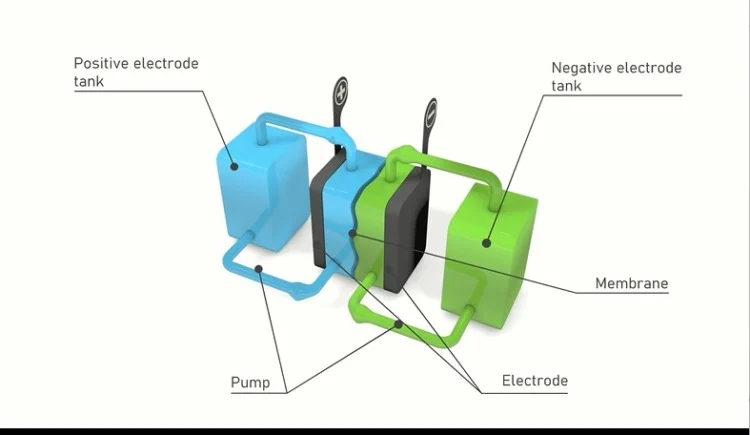
| Life Cycle (Approx.) | 8000-15000 cycles |
| Round-Trip Efficiency (%) | 65%-75% |
| Average Cost (USD) | $200/kilowatt hour |
| Depth of Discharge (%) | 100% |
| Lifespan | 30 years |
Flow batteries are also a newer type of solar battery that’s getting more popular in the energy storage sector. These batteries are well-known for their lengthy lifespan and ability to store a large amount of energy.
Flow batteries use a unique water-based electrolyte liquid. This liquid flows between two separate chambers or tanks within the battery, allowing for efficient energy storage and retrieval. This flow design is also what helps improve the battery’s lifespan and overall performance.
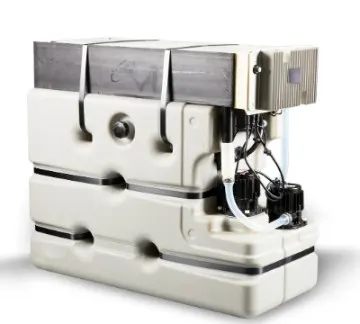
Flow batteries, while not as common as lead and lithium batteries, can be a good choice for larger solar systems. The Redflow’s ZBM3 flow battery is a solid choice with its longer lifespan, higher capacity, and eco-friendliness.
However, an important drawback is that a flow battery doesn’t hold a lot of energy for its size. So, it needs really big tanks to store a significant amount of energy. This makes flow batteries super expensive and too big for residential use.
Advantages
- Scalable capacity, allowing for easy expansion or reduction of storage capacity.
- Have the longest lifespan on this list – up to 30 years!
- High energy efficiency with a 100% depth of discharge
- Fire resistant
- Require low maintenance when compared to other solar storage batteries
- Very few options are available for residential applications
Disadvantages
- Higher upfront cost
- Lower energy density
- Bulky and require more physical space
- More complex design and installation process
Ideal Use Cases
- Large-scale commercial solar projects
See Related: Best Solar Power Banks to Buy Today
5. Sodium-Nickel Chloride Solar Batteries
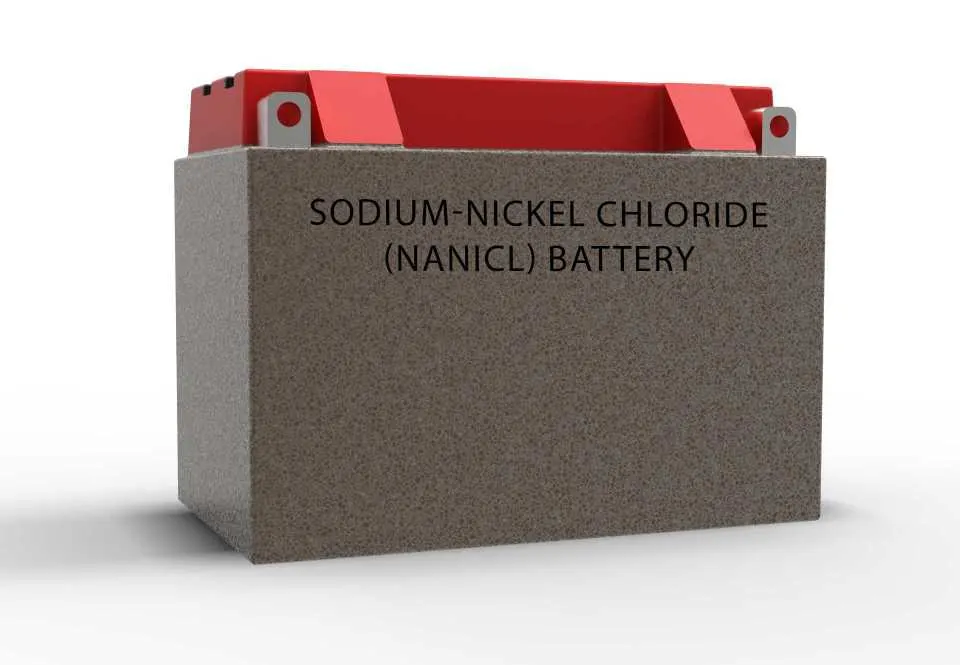
| Life Cycle (Approx.) | 2000-4500 cycles |
| Round-Trip Efficiency (%) | 85%-95% |
| Average Cost (USD) | $500-$600/kilowatt hour |
| Depth of Discharge (%) | 80% |
| Lifespan | 15 years |
Sodium-Nickel Chloride (Na-NiCl2) batteries are a type of high-temperature energy storage system. They are also known as ZEBRA (Zeolite Battery Research Africa Project) batteries.
These batteries work well at high temperatures, between 518°F (270°C) and 662°F (350°C). They are environmentally friendly, can hold a lot of energy, and last a long time before they wear out.
At first, these batteries were made for electric vehicles. But their useful features have also made them a great fit for renewable energy systems, like solar power. However, they are still in the early stages in power utility use and have significant room for improvement.
One important note to keep in mind is that Na-NiCl2 batteries need to stay really hot to work well. Thus, keeping them at the right temperature can be a bit tricky and more expensive than other batteries.
Advantages
- High energy density
- Long lifespan
- Ability to operate at high temperatures
- Require low maintenance
- Great scalability and flexibility
- Have zero emissions hence is the most environmentally friendly solar storage solution
Disadvantages
- Expensive when compared to other battery storage options
- Sensitivity to temperature (functions optimally at high temperature)
- The ceramic electrolyte is fragile
- Relatively low efficiency when compared to some other battery storage technologies
- Limited availability
Ideal Use Cases
- Stationary energy storage for solar PV systems
- Off-grid solar systems requiring higher storage capacity
- Residential and commercial uses
- As support energy storage systems for renewable power plants
- Peak management applications
See Related: Best Pool Heater Solar Panels
How to Choose the Right Type of Solar Battery
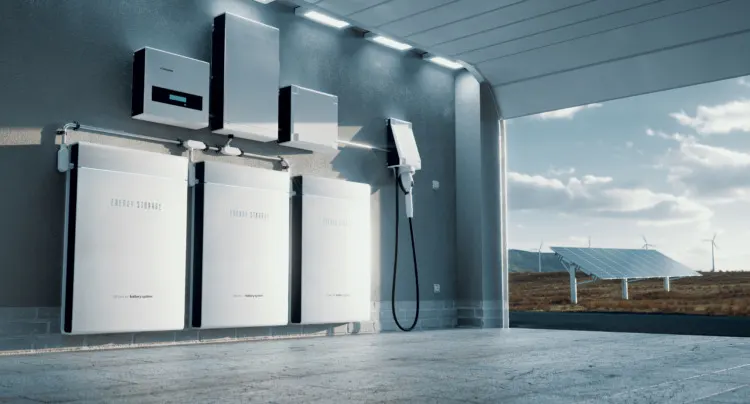
Battery Life
Solar batteries have limited lifespans, and their ability to hold a charge will decrease over time. Thus, you want to choose a battery that will last as long as possible so that you don’t have to replace it frequently.
With that being said, the lifespan of a battery is determined by several factors. For example, the type of battery, cycling, depth of discharge (DoD), maintenance, and temperature.
Generally speaking, lead-acid batteries can last anywhere from 3 to 10 years, depending on how you take care of them. Lithium-ion batteries usually have a 10+ year warranty but could live as long as 15 years if you take good care of them.
Depth of Discharge (DoD)
Depth of Discharge (DoD) refers to the percentage of a battery’s power that you can use before needing to recharge it. For example, if a battery has a 90% DoD, you can use 90% of the battery’s energy without negatively affecting its lifespan.
Some batteries may have a lower DoD, meaning you can only use a smaller percentage of the total energy without potentially harming the battery’s lifespan.
For example, traditional lead-acid batteries usually have a DoD of around 50%, while lithium-ion batteries and flow batteries typically offer a higher DoD, around 80-90%. Remember, a higher DoD is generally better as it allows you to utilize more of your battery’s capacity. However, the actual DoD can vary depending on the specific battery model and manufacturer’s guidelines.
See Related: Best Solar Driveway Lights: Energy Efficient Options
Round-Trip Efficiency
The round-trip efficiency is essential to think about when purchasing solar batteries for your home. Round-trip efficiency is how much electricity you can use after charging the battery while the battery uses some energy to run itself.
When there’s a higher round-trip efficiency percentage, it means that there’s far less power loss from the charging process.
Capacity Rating
The capacity of a solar battery is a measure of how much energy it can store, often measured in kilowatt-hours (kWh). You will need to consider how much energy you typically use when choosing a battery capacity. If you consume a lot of energy, you might need a higher-capacity battery.
Power Rating
Power rating represents how much electricity a battery can deliver to your home at once, measured in kilowatts (kW). This is important if you have high energy needs or if you want to run multiple appliances at the same time.
See Related: Best Solar Refrigerators and Freezers
AC and DC Coupling
When choosing a solar battery for your solar system, it’s important to think about whether it should be AC-coupled or DC-coupled. AC-coupled batteries work well with both new and existing systems. This gives you independence from the grid and the ability to store energy from various sources.
DC-coupled batteries are slightly more efficient overall than AC-coupled batteries. They convert energy better and can optimize your solar system’s performance.
We also recommend looking into DC-coupled solar batteries because they’re far more efficient and can even pull energy from solar panels when the grid is down. The downside to DC-coupled solar batteries is that they’re difficult to install, which can bump your installation price.
Initial and Ongoing Costs
Upfront costs for a solar battery can vary greatly, so it’s important to consider your budget and your energy needs. Also, consider the potential ongoing costs for maintenance and replacement.
A less expensive battery will cost you more money in the long run because it needs to be replaced often. Conversely, a more expensive battery will be a better value if it lasts longer and requires less maintenance.
For instance, although lithium-ion batteries have a higher upfront cost, they offer better long-term value due to their longer lifespan and higher efficiency.
Warranty and Brand
Solar batteries typically have a 10-year warranty, but the specifics can vary. Look out for ‘cycle clauses’ that could end the warranty early if the battery cycles (charges and discharges) reach a set limit before 10 years.
Also, check the ‘end-of-warranty capacity’ indicating the battery’s charge capacity at the warranty end. It should retain at least 60% capacity. Finally, consider the brand’s reputation and read reviews to get a better understanding of its performance.
Safety and Environmental Impact
Finally, check if the battery has safety measures in place to protect against overcharging and overheating. This is crucial to ensure the safe operation of the battery and prevent any potential hazards, such as ‘thermal runaway’ or ‘acid leakage.’
Also, consider the environmental impact of the battery’s materials and its disposal requirements. Some batteries use materials that are less harmful to the environment than others.
See Related: Best Bear Sprays: Top Choices for Safety in the Wild
Comparison of Different Solar Battery Types
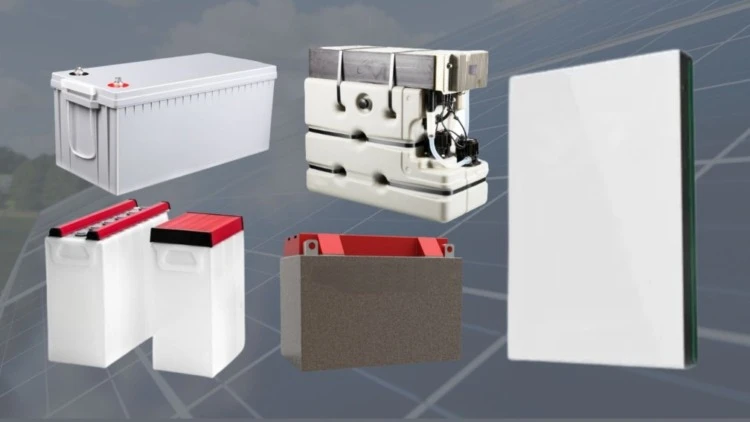
Each battery type has its strengths and weaknesses. To help you navigate these, we’ve created the following comparison table showcasing the most common types of solar batteries:
| Solar Battery Type | Description | Pros | Cons |
| Lead-Acid | The is the most common type of solar battery. It is inexpensive and reliable. | – Inexpensive – Reliable | – Shorter lifespan compared to other types – Requires regular maintenance |
| Lithium-Ion | A newer and more expensive type of solar battery. It is lightweight and has a longer lifespan. | – Lightweight – Longer lifespan – Requires less maintenance | – More expensive – Can be dangerous if not handled properly |
| Nickel-Cadmium | An older type of solar battery. It is durable and can withstand extreme temperatures. | – Durable – Can withstand extreme temperatures | – Contains toxic materials – More expensive than lead-acid batteries |
| Flow Battery | A newer type of solar battery. It has a long lifespan and can store large amounts of energy. | – Long lifespan – Can store large amounts of energy | – Expensive – Requires a large amount of space |
| Sodium-Nickel Chloride | A newer type of solar battery. It has a high energy density and is environmentally friendly. | – High energy density – Environmentally friendly | – Expensive – New technology, limited availability |
(Source: Personal experience as a data analyst at a large content publisher specializing in data science)
Frequently Asked Questions
Different Types of Solar Batteries Available in the Market
The most common types of solar batteries available in the market today are:
> Lead acid batteries
> Lithium-ion batteries
> Flow batteries
> Nickel-cadmium batteries
> Sodium-Nickel Chloride
How Do I Choose The Best Solar Battery Type For My Needs?
Well, your decision should be guided by a few key considerations, such as:
> What are your energy needs?
> What is your budget?
> How much space do you have for the battery system?
> Do you prefer an environmentally-friendly solar battery?
Reflecting on these questions will lead you toward the best battery type to fit your specific needs.
What is The Difference Between Lithium-Ion Battery and Lead-Acid Solar Battery?
Lithium-ion batteries have a higher energy density, longer lifespan, and are more compact compared to lead-acid batteries. However, lithium-ion batteries have a higher upfront cost compared to lead-acid batteries.
Are There Any Notable Solar Battery Brands I Should Consider?
Some notable solar battery brands include Tesla, Sonnen, LG Chem, Renogy, Redflow, Trojan Battery, EnerSys, and Crown Battery.
How Much Do Solar Batteries Typically Cost?
Solar battery prices can vary greatly, depending on the battery type, capacity, brand, and a host of other factors. As per the National Renewable Energy Laboratory (NREL), the total cost of a solar battery, including installation, might reach up to $18,791, with the battery itself accounting for about $16,007 of this total.
However, this is a rough estimate and prices can vary significantly, particularly as technology continues to evolve. Always check the latest prices and compare different options before making a purchase.
Related Resources:
- Best Batteries for Solar to Buy Today
- SunRun vs SunPower Solar Panels
- Best Solar Panels for Greenhouse


